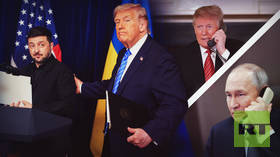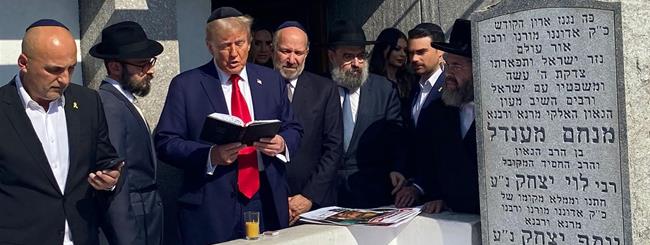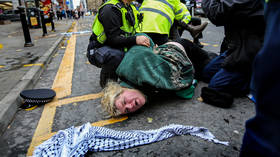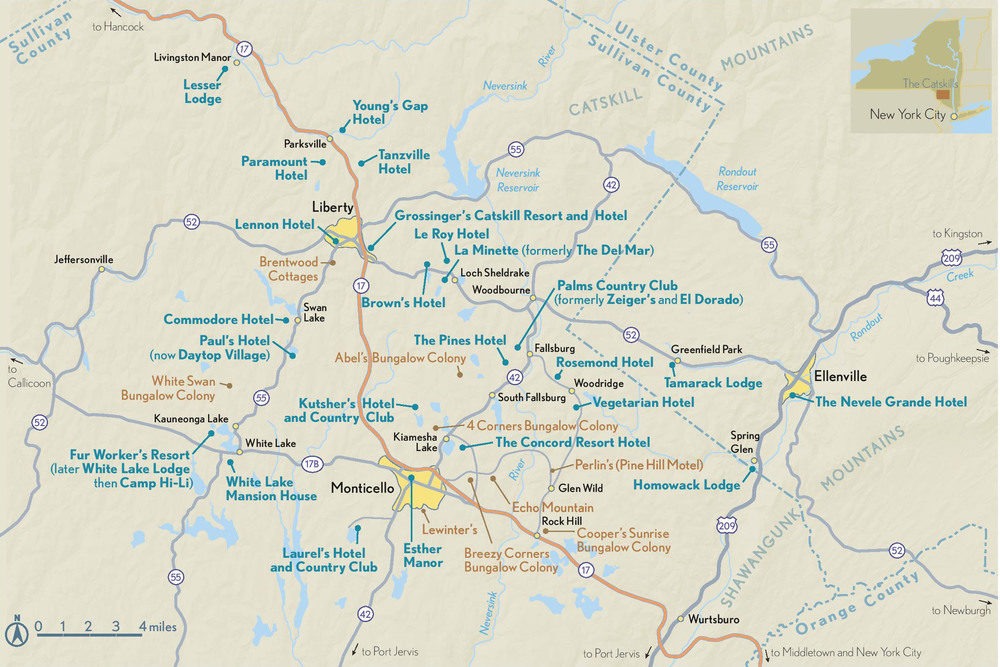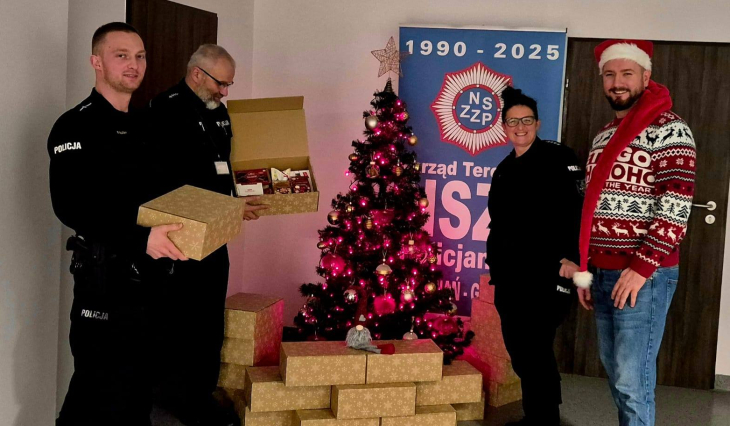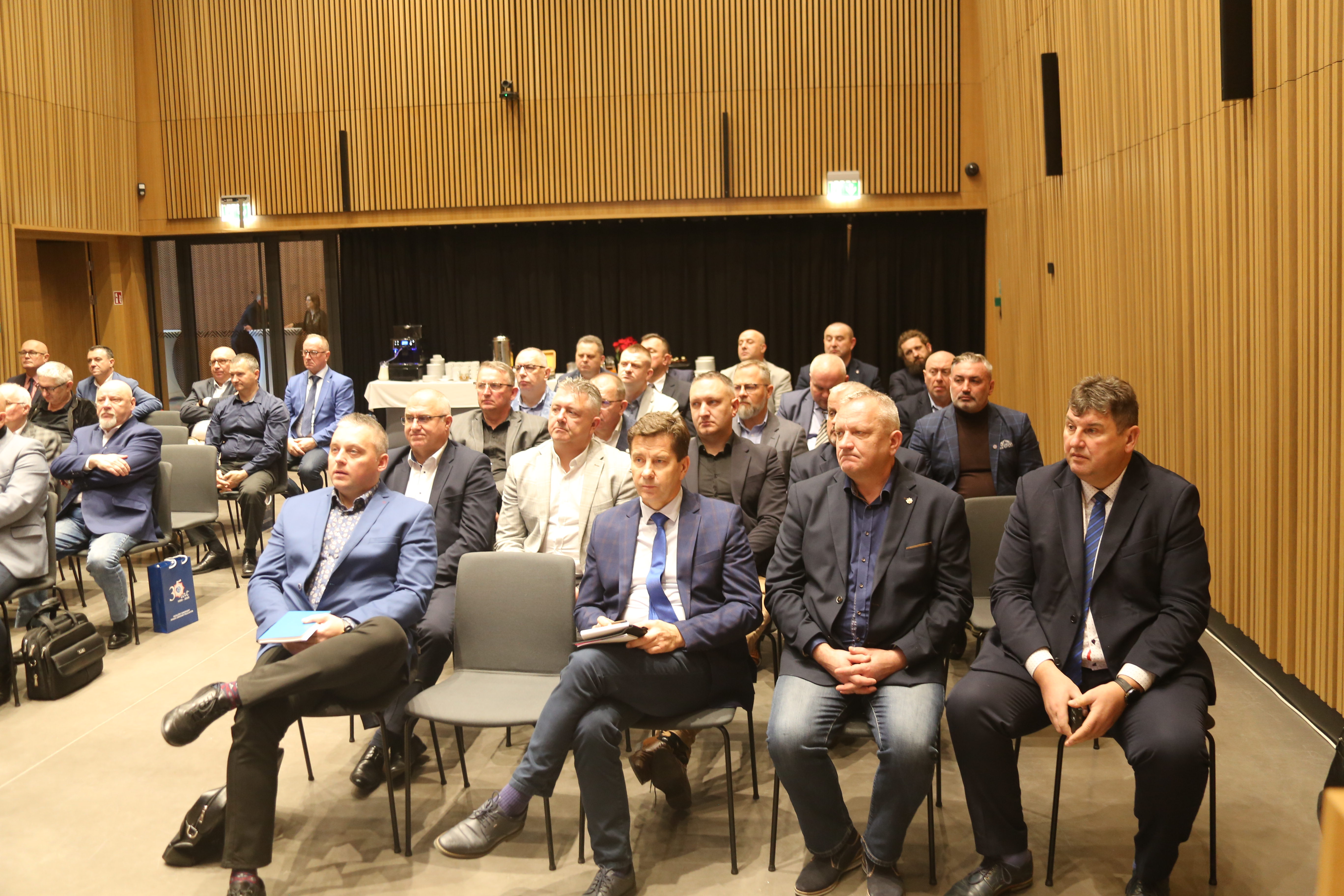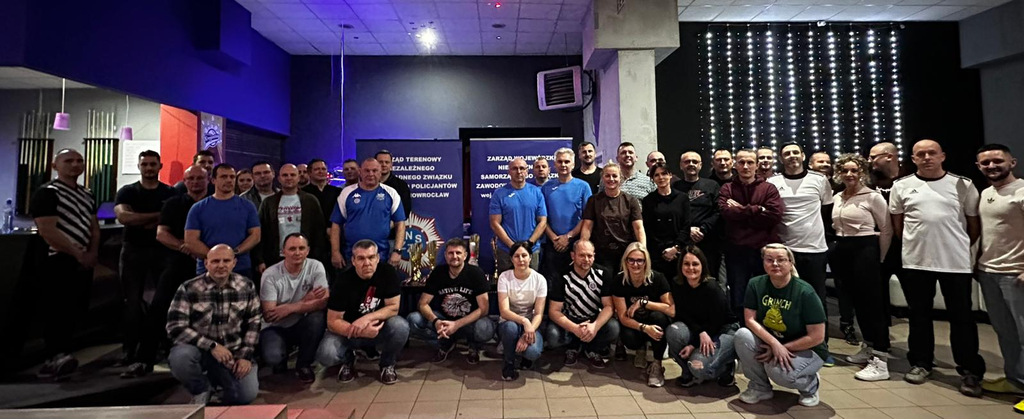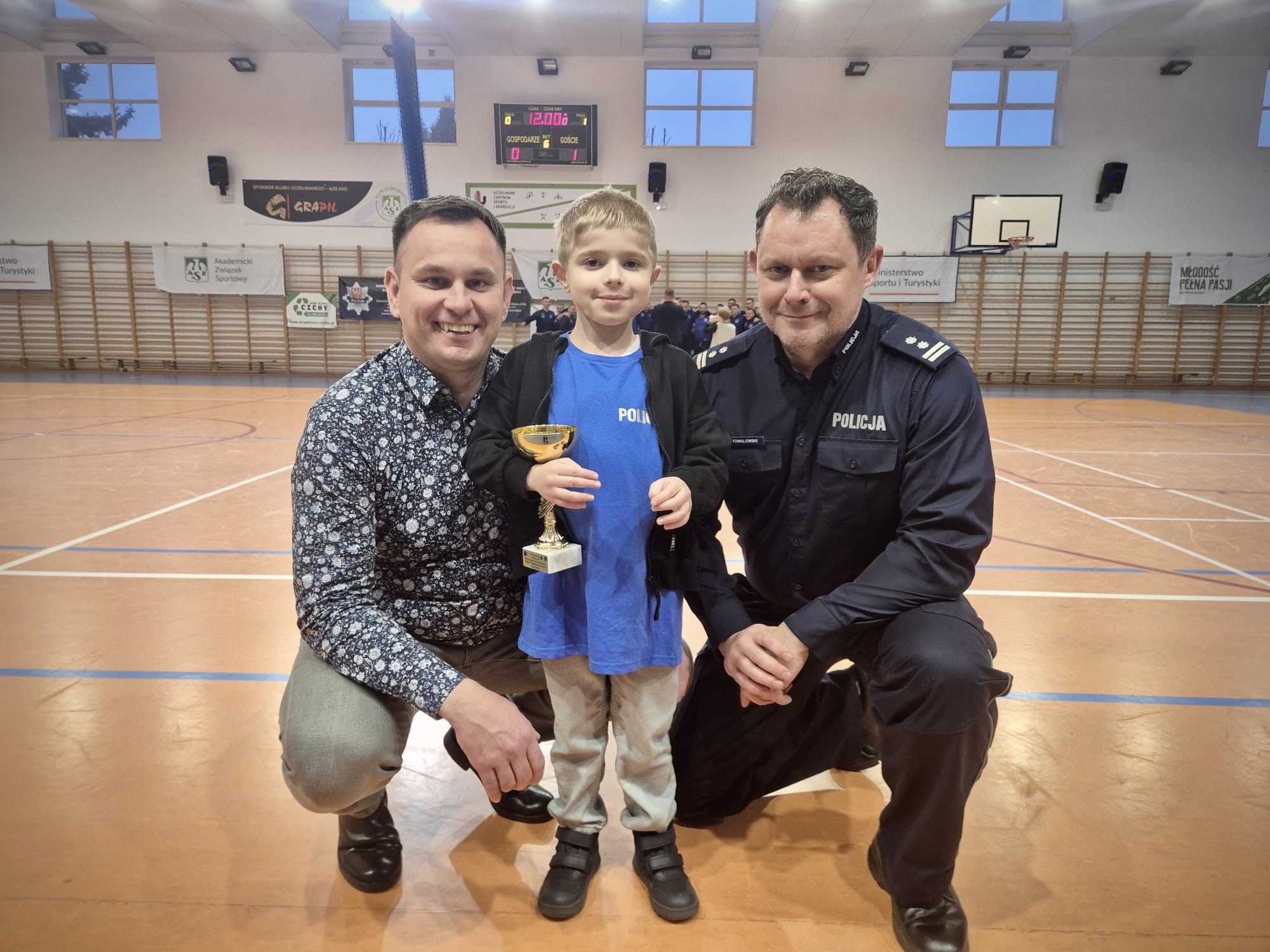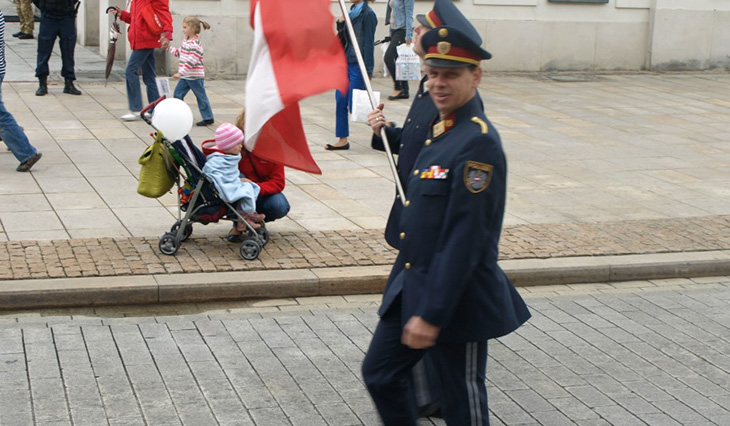
September 2, 1939
On 17 September 1939, at 5.40 p.m., the Red Army crossed the border
with Poland. due to general confusion caused in Polish ranks
by order of the chief chief (not to fight the Soviets), regular troops
The HR did not undertake coordinated attempts to defend the east Borders. It wasn't.
certainty about the intentions of the Soviets who disinformation the troops encountered,
that they are going to aid Poles fight Germany. However, any branches
Polish opposition was strong. First against aggressor
there were crews of the border guards of the Territorial Defence Corps (KOP) who were not amazed and to the measurement of their thin forces undertook the fight.
The anniversary of the outbreak of planet War II sparked a lively discussion in the press – as usual on specified occasions journalists focus on fewer episodes
glorious or complaining about the inability of Polish commanders. However, reliable investigation shows that the September run was not just a series of Polish disasters
– due to the fact that it abounded in many smaller and larger victories of our army. And although it ended with a Polish defeat, contemporary Poles can be arrogant
from the heroism of their ancestors who in September 1939 opposed the armed advantage of the Wehrmacht and the Red Army. present we remind of 2 specified episodes: a journey of Polish cavalry to the territory of Germany under Wschowa and the defence of Grodna before the Soviets. We besides show the little-known actions of the Slovak Army, which moved through
Poland alongside the Germans, as the 3rd (after the Soviets) ally of the 3rd Reich. Let us remember that the beneficiaries of the 4th partition of Poland, initiated by the Ribbentrop–Molotov agreement, were not only Germany and russian Russia, but besides Slovakia, participating in the September aggression, and Lithuania, which in October 1939 took in favour of Stalin and Hitler Vilnius, joining the eye
pants of Polish lands. It is worth considering how strong the mark of that "devil pact" of August 1939, despite the collapse of both totalitarian systems, was reflected in the form of our already independent Poland.
INSTALLATION ACCIDENT
2 September 1939 in the afternoon commander of the 55th Infantry Regiment
he was ordered to travel to Germany towards the West. The command was to “reject enemy troops and fire artillery on this village”.
In September 1939, a fundamental fight was not anticipated at the south-western ends of the Republic. Shield actions were established to let for the smooth conduct of the concentration of the Army regiments “Poznań” Gen. Tadeusz Kutręba. This army consisted of selection units of Wielkopolska (four infantry divisions and 2 cavalry brigades), reinforced by 2 national defence brigades. The defence in the Rawicz–Leszno–Kościan belt was organized by the commander of the Wielkopolska Cavalry Brigade Gen. Brig. Dr. Roman Abraham. He had under his orders an excellent military – among others, the 15th Ulanów Poznań Regiment, the 17th Ulanów Wielkopolska Regiment, and the 7th Horse firearm Regiment. His Wielkopolska Cavalry Brigade was besides expected to organize the defence of the Warta River line from Mosina to fresh Town. General Abraham's subordinate forces divided him into: Distributed Forces and Defence Episodes. The south-western areas of Wielkopolska were to be defended by 3 divisions separated by: OW “Leszno” (Mjr. J. Dymowski), OW “Rydzyna” (rtm. S. Czerniawski) and OW “Rawicz” (pt. S. Otworowski). They were to execute effective shielding actions in the cross-border runway. As he later wrote in
memories: “There were 2 powerful ones in the belt I was assigned
Communication nodes lying above the limit: Leszno and Rawicz, which as an easy prey lured the opponent. Leszno lay on the northwest wing of the episode, while Rawicz lay on the utmost wing of the southwest. I had no intention of allowing the enemy to master these cities impunitylessly.”
As we know, the offensive of German troops fundamentally bypassed the areas of south-western Wielkopolska. In this direction, according to the 8th Army guidelines,
the main task of which was to shield the attacking troops 10. Army
before Polish strike from the north, only border troops 13th and 14th. Episode
Landwehr's borderline and auxiliary troops were expected to phase an attack on Leszno and Rawicz. The German troops were to execute 2 strikes: from the Wschowa territory towards Leszno and from the Żmigrod region to Rawicz and further towards Poznań.
Towards Fraustadt on 1 September 1939, at about 5 a.m., the first German artillery missiles fell on Leszno. The German fire, with positions located in the area of the West and the Mountains, had
destroy the Leszczyn railway node and barracks complex. Bombs besides fell on homes
residential in the city center. German diversions besides began the attack
in Leszno, who shot at the Polish garrison close the command
soldiers. beautiful quickly, however, soldiers of the 55th Infantry Regiment and the National Defence Battalion
they have dealt with the exposed locations of the German V column. In the afternoon, the German diversion was crushed – 16 Germans were killed and 19 were taken prisoner with a weapon in their hand. There were besides preventive arrests, in the city area, about 400
Germans. Later, the WBK Field Court sentenced 5 diversions to death penalty.
The next day, on this front stretch, the Germans, who had been previously stopped twice, behaved passively. On the Polish side it continued
preparations for departure in the 3rd Reich – towards Fraustadt
(Insect). Polish reconnaissance aircraft took off at dawn, with the task of recognizing German forces in the vicinity of Wschów. It's already been removed from the sewers at night.
Wielkopolska Cavalry Brigade, platoon of cyclists Lt. Zbigniew Barański. From the very beginning of activities in the forest in the prefield of Wschów was
Reconnaissance platoon from the 2nd Squadron of the 17th Ulan Regiment, commanded by Lieutenant Tadeusz Stryja, who provided information to the Gen. Abraham on the radio.
In the afternoon, commander of the first bar 55. The Infantry Regiment received
an order to travel to the territory of Germany towards the West.
The order was to reject enemy troops and fire artillery on this village.” The 2nd Leszczyński Infantry Regiment Company commanded by Captain Edmund Lesisz, reinforced with artillery platoon of Captain Ludwik Snitko, platoon of dense device guns, and platoon of
armored cars. They were to be covered by: from the north – the platoon of Lt. Tadeusz Strya, and from the south – a squadron of TKS reconnaissance tanks reinforced with a platoon of cyclists. This shield group was personally commanded by the commander of the Wielkopolska Cavalry Brigade.
SURVEILLANCE
The activities of both distant groups began at around 16 p.m. First, Captain Lesza's infantrymen entered the area of the Reich, who liquidated Grenzschutz's guard.
in the village of Geyersdorf. At the same time, the Polish artillery, whose prepared German anti-tank ditches did not let to decision to the German side. So artillery fired from Poland. Her fire, which first fell on the village of Geyersdorf, caused a panic among the German soldiers located there, and increased even more erstwhile Polish reconnaissance tanks were placed in the prefield of the village, Lt. Wenceslaw Boyk. While Polish infantry was sweeping the village, Colonel Władysław Wierzyński – commander of 55 arrived. Regiment
Infantry. The Polish infantry after taking the village went further towards Wschowa. Even before the evening, Polish artillery, extending the fire, began shelling the German town. Polish missiles fell on the barracks in the city. The head of the Polish reconnaissance reached the horns of Wschowa (to the intersection of the Leszno–Głogów and Zbarzewo-Mountain roads). During this attack, Poles took 7 German soldiers into captivity. After dark, WBK commander Gen. Abraham
ordered the withdrawal of Polish forces towards Leszno. The platoon of soldiers besides withdrew. Stryi, who operated on enemy territory for over 30 hours. Captain Lesisza's infantry company returned through the village of Święcichowa, where the local Germans, reasoning that Wehrmacht troops were entering Poland, appeared with Nazi banners. Among the amazed Germans, what more active “demonstrants” were arrested.The Polish forces of Gen. Abraham in the direction of Wschów, with the temporary business of the village of Geyersdorf, showed the operational possibilities of the attacks. Unfortunately, on September 3rd, the next day after the action on
The Polish troops left the garrisons in Leszno and Rawicz in accordance with the general plan. However, the actions on Wschowa had an invaluable emotional and moral value – especially for the troops of the Wielkopolska Cavalry Brigade of Gen. Roman Abraham. They showed that the enemy can be beaten effectively and besides in its territory.
SAMPLING ON PAPER
It is worth giving a fewer words to the associate of the journey to Wschowa, commander of the 2nd Company of the 55th Poznań Infantry Regiment – Captain Edmund Lesz, who paid with his life
For fighting for your country. The destiny of this soldier and his household is simply a perfect example of how that generation understood the work to defend the Homeland. In September 1939, 4 Leszów brothers went to fight for the borders of the Republic. The oldest brother – Edward – was a bomb squad lieutenant, fought in the ranks of the Army “Lodz” and got into russian captivity – gave his life in Katyn. Felix Lesz was a doctor
– graduated from the Faculty of medicine at Stefan Batory University in Vilnius. In September 1939, as a reserve lieutenant, he was mobilized to the 3rd territory infirmary in Grodno. Like the older brother at the end of September until he became a russian prisoner – he was killed by the NKVD in Kharkov. They both gave their lives on the east Borders of the Republic, occupied by the Soviets. Trans
There was a war between the youngest of the brothers – Tadeusz (Announcer 1918), who was a postgraduate of the Cadet Corps No. 3 of the Marshal Edward Rydz-Śmigłego in Rawicz and the School of Naval Underchorry. In the summertime of 1939, he boarded on an ORP destroyer "Burza" sailed, as part of Operation "Pekin", to the UK.
Returning to the destiny of Captain Edmund Lesza – professional ofier, graduate
Cadet Corps in Lviv, serving in the celebrated 55th Poznań Infantry Regiment – originating in its fighting tradition from the 1st Wielkopolska firearm Regiment, which
The banner in 1920 under Zelwa decorated with a blue-black ribbon of the order of Virtuti Militari marshal Józef Piłsudski. As a professional officer, he collected Captain Lesz the perfect
opinions from his superiors, among others – Colonel Stefan Rowecki and Colonel Władysław Wiarzynski. After the 1939 September campaign, Captain Leszis was taken prisoner in German and stayed in the VIIA flag in Murnau. There, in the fall of 1941, he was arrested, contrary to the conventions on the treatment of prisoners of war. Similar
The destiny besides met his superior – Major Jan Dymowski – in September 1939.
Commander of the 55th Infantry Regiment. Until January 1943, they were both held in prison in Łódź, where they were to be tried.
Although Captain Lesisz was tortured during the investigation, in his letters to his parent he assumed optimistically that he would shortly be released. He wrote to her about the hope of
a fast return to colleagues in the olag. He was murdered the day before the trial ended – 21 January 1943. The prison authorities in 3 authoritative writings informed the desperate parent of the captain. Lessha about her son's suicide
– changing the date or not giving it at all. And so the first letter reported
about suicide – 15 January 1943, the second confirmed the fact of death without giving a date. The last 1 reported that E. Lesisz "died" on 21 January 1943.
On the actual course of events related to the death of Captain Edmund Lesisz
informed, after returning to the Oflgu, Major J. Dymowski. Trying the youngest
brother – Tadeusz, who survived the war and lived on emigration in the UK
– in the 1970s, Captain Edmund Leszisz was posthumously decorated with the Virtuti Cross
Military through a chapter in London.
This little-known episode of Polish troops' actions in defence of the western borders of the Republic, which besides includes the departure of 55 branches. Regiment
Infantry and 17th Regiment on the border, German then town of Wschowa
(Fraustadt), as well as the destiny of the participants of this action – on the example of Captain Edmund Lesisz – stay a part of the collective memory which we are obliged to retain.
INVASION OF THE SOWIEC GRAND RESOURCES
About a 1000 Polish soldiers were captured in the battles for Grodno. Many of them were run over by russian tanks on the east
The edge of the city, most of the offiers. WP was shot on the spot, a large part
The city's defenders, including minors, were shot in the area of Psia Górka, “Krzyżówka”, Pohulanki and the barracks of the 81st Infantry Regiment. Probably.
the cruelty of the Soviets was the consequence of advanced losses in battles.
First preparations for aggression against Poland were made by the Red Army in the summertime of 1938. After the outbreak of the German-Polish War, on 3 September 1939, the mobilisation of troops in areas bordering the Republic of Poland began. Mobilization was camouflaged by the announcement of large exercises in these districts. They were to begin on 7 September and then began to concentrate invasive forces. In total, the russian aggressor's army counted more than 620,000 soldiers, supported by 4733 tanks and 3298 aircraft. This includes many additions, even at body level, that have reached throughout the campaign. After the fighting ended, the number of russian business forces in Poland was about 2.5 million soldiers.
The Polish side was incapable to defy specified forces effectively. Edges
Eastern, and north-eastern provinces in particular, were almost completely stripped of military units that departed to the anti-German front. The remaining formations are mostly incomplete improvised and guarding troops. In addition, no uniform command
He weakened their combat capabilities anyway. In total, Polish forces between Białystok, Vilnius and Pinski counted 40–45 1000 the day before russian aggression.
soldiers with a fewer artillery. The armored weapons were missing, the air force was counting only a fewer machines. Many soldiers lacked handguns.
On 17 September 1939, at 5.40 p.m., the Red Army crossed the border with Poland.
Due to the general disorientation caused in the Polish ranks by the order of the Chief Leader ("do not fight the Soviets"), regular ND troops did not take
coordinated attempts to defend the east Borders. There was no certainty about the intentions of the Soviets, who disinformationd the troops they encountered, that they were going to aid Poles fight Germany. Despite this, any Polish troops have put forward strong
resistance. First against the aggressor were the crews of border guards
The COP, which was not surprised, began to fight to the measurement of their thin forces. Since Poles did not have armored weapons or aviation in the russian attack zone, defensive tactics were adopted, attacking russian ambush columns for
assistance to anti-tank guns and handguns. It couldn't halt the offensive,
But it delayed the Red Army's advancement by about 2 days compared to
the first plans of russian command. 1 of the heroic episodes
These fights were Grodn's defense.
THE CITY OF THE GERMANY
On the morning of September 17, Grodna received news of russian aggression, triggering
among the inhabitants, a large depression. The decision to defend the city against the fresh aggressor was made by Vice president Grodna Roman Sawicki, who ordered the digging of anti-tank ditches and the construction of dams. The situation was complicated by the fact that
That in the city and in its vicinity communist diversions were revealed, mostly
Jewish origin, and the fight against them active serious defence forces.
Among another things, on September 19, a criminal expedition (about 100 people) was sent to the town of Skidel, mastered by the diversions to occupy it. Soldiers and policemen shortly restored order there, releasing imprisoned Poles (including
ofers). During the fight, part of the town buildings burned down, 29 diversions were killed. At the same time, the fight against the communist “V column” in Grodno itself continued. Despite the dramatic situation of Grodn's improvised defence (no
Artillery, anti-tank weapons, bomb squads, fewer regular WP formations) showed signs of improvement. Regular WP troops from Grodzieńszczyzna and Wilenszczyzna began gradually reaching the city.
The first battles with the Red Army in the Grodna Prefield occurred in the Skidla area on the morning of 20 September. The Soviets came from the north-east. For weight-
sneez, all-day fighting with russian tanks supported by local diversions bled squadrons of Polish cavalry (about 400–450 soldiers
Without anti-tank weapons) they had to decision back from the burning town to Grodna.
Poles destroyed or severely damaged six combat vehicles, own losses are
killed 4 officers and about 20 privates. Thanks to persistent fighting
In Skidl, Grodn's defender gained valuable time to better prepare the city's defense. The forces of Grodna defenders were then incomplete 2 infantry battalions armed with handguns and fewer device guns. It was the 1st Grodna defence Baon of Captain Peter Korzon and the 2nd Grodna defence Baon of Major Benedict Serafia. In addition, the town had an improvised 200-person branch of Lida L.R. Antoni Iglewski, part of the 5th Air Regiment's wheel throw and two
Bofors, effective in fighting tanks. Defenders' forces were supported by offiers and soldiers located in the city, MPs and police officers and scouts. There were about 2–2.5 1000 people under the gun. The defence was de facto commanded by 2 men: Vice president Sawicki and Major Serafi. Under their supervision, ditches were dug
Anti-tank, dams were erected, auxiliary and volunteer services were equipped. Natural obstacles, including elevations, the Niemen River and brick buildings were utilized for defence purposes, on which defensive lines were based in the suburbs. But the defence forces were besides thin.
to fill the lines properly.
FIGHT WITH THE DUTY
On 20 September at 8.00 p.m. from the south, a reconnaissance battalion of the russian 27th Armored Brigade approached Grodno, whose tanks attempted to conquer the city, from a march attacking them over a road bridge in Germany. The russian column fell under strong fire of Polish defenders. It's a heated fight. More tanks tried to enter the city center. Polish fire stations located in attics and basements were hard to breach. The obstacle to moving tanks around the city was narrow streets, which was utilized by defenders,
Isolating single machines and trying to destruct them. The dense fire of device guns mixed with fire driven by anti-aircraft guns, defenders littered bottles with gasoline. The hunt for tanks without infantry has begun. Six BT-7 tanks burned down. During this time, the second battalion of russian tanks, numbering 19 wagons, and another subdivisions of the 27th Armored Brigade, reached Grodna. In the afternoon, on 20 September 1939, 2 tank battalions, a reconnaissance battalion and a company of soldiers constituting their cover (a full of 42 tanks) were already in the suburb of Grodna. russian artillery has constantly shelled the city, causing considerable losses among the defenders – the reason for this was information from communist divers who pointed out targets to the Soviets. After crossing the Niemnie with boats on the southwest outskirts of the city, The Soviets captured
There's a bridgehead. In the central part of Polish defence tanks 27. The Armoured Brigades pulled up to the shore of Niemno and began shelling the city, and 4 of them entered the center. During the night fights, 2 were destroyed. The balance of the first day of the fight was beneficial for the Polish side: the defenders destroyed at least 10 combat vehicles and did not let Niemnie to be overrun by the remainder of enemy vehicles. Soviets withdrew armored weapons to the suburb of Grodna, which allowed Poles to take
a catch action. At around 11:00 p.m., a group of 20–30 soldiers, most likely from the 1st Grodna defence Baon, crossed the Nemna River by boat. After a winning battle, they returned to the area occupied by their own troops.
In the defence of the city, the youth, the mediate school students who spontaneously formed improvised groups to fight tanks, carried reports
And they fought the diversions.
The figure of 13-year-old Tadek Jasinski became a symbol of the dedication of young people.
Wounded while attempting to set fire to the tank, he was captured by the Soviets
and tied to the armor as a surviving shield. Nevertheless, the tank succeeded defenders
destroy and retrieve a kid who died a fewer hours later on his mother's hands. The news about the heroism of young people defending Grodna has spread throughout Poland. In 1941.
General Władysław Sikorski during the inspection of the 6th Infantry Division in the USSR, talking to a group of surviving participants in the conflict of Grodno, said: “You are the new
Eagles. I will effort to get your city to receive the Virtuti Militari and the title "Semper Fidelis" (similar to the defence of Lviv in 1918).
RETURNING STATION
In the morning of 21 September, russian 119. The firearm Regiment has launched an attack on the direction
Skidel road preceded by artillery preparation. Polish people skillfully
They exploited the gaps between the attacking troops, penetrating their rear, attacking and causing chaos and confusion among the Red Army. Before 8 a.m., Polish forces began a controversy which was to reject russian troops behind Niemen. The Polish attack brought half-success: 119 were partially dispersed. The firearm Regiment, the Soviets suffered dense losses, were partially surrounded and pushed towards the river – however, they were not completely destroyed. From hr to hour, the force of the attackers and their advantage over the defenders grew. By noon, on September 21, 2 russian armored regiments (28. and 31.) joined the fight, but they failed to capture both bridges in Germany. There, Lieutenant Nosalik fought there, who for over a day blocked the Soviets access to the city center from the south, destroying or severely damaging at least six combat vehicles. A much more effective group of the 16th Armed firearm Corps, Rozanov, came from the east. The tank company broke through after a two-hour fight by the Polish defence group Colonel. Blumski and merged with the bled-out banners of the 119th firearm Regiment. It seems to have been Grodn's defensive turning point. Around noon, the Defence Command decided to leave the city. At the same time, russian troops attacking from the east went deep into the Polish defence as a consequence of the usage of criminal methods of combat: the usage of civilians as surviving curtains for attacking tanks.
Due to withdrawal of Polish troops from the city and departure of units
WP towards the border with Lithuania, russian troops went out the back yet
Weighting divisions. The order about the retreat did not scope all Polish troops due to the actions of communist militants on the back of the defenders.
The Rozanów Kombryga group managed to cross the railway line line and get message and telegraph located in the north-eastern part of the city (at Orzeszkowa Street), bank (Napolena Street) and power plant (Jagiellońska Street). The fights moved to Grodna center. That's how the Soviets got in the back of the defense-
of the railway line. Around 2.30 p.m. Soviets with 4 support
Tanks hit the left wing of the ON ‘Sets’ bar. The attack was repulsed, destroying two
of them. In fear of laps at 4:00 p.m. Baon commander, Captain Come on,
He withdrew soldiers behind the railway line and then directed the baon towards where
The remainder of Polish troops evacuated.
The russian War Crimes
Polish opposition impressed the Soviets. For fear of losing more
Tanks in street fights, armored forces were withdrawn from the fight in the afternoon 21
September.
The city's general storm was scheduled for 6am next
day. In the evening there were inactive fewer points of Polish opposition in the city: Old Castle, a squad of vocational school buildings and barracks of the 81st Infantry Regiment. It fought.
Still about 300 defenders. However, most of them left the city under cover of night.
It didn't capitulate. The next day, on 22 September, however, during the business of the city there were inactive fights with tiny groups of defenders.
About a 1000 Polish soldiers were captured in russian captivity. Many of them
was run over by russian tanks on the east edge of the city. As a consequence of the IPN investigation, it was established that the Soviets murdered about 300 defenders of Grodn,
Including Piotr Bogucki, Head of the School No. 2. Most taken
WP officers were shot at the scene. Many city defenders,
including minors, were shot in the area of Piej Górka, “Krzyżówka”, Pohulanki
And the 81st Infantry Regiment. most likely the cruelty of the Soviets was the consequence of advanced losses in battles.
GENERAL BILANS LOSS
According to estimates, opposition of the WP against the Red Army throughout
East Poland cost the lives of 6–7,000 soldiers (killed and murdered) and, as reported by the overestimated russian reports, 575 1000 prisoners (including 240–250 1000 from regular formations). This discrimination is crucial due to the fact that the Soviets took into captivity the military adoption junacs, as well as all uniformed state officials: policemen, firefighters, railroad workers, post office workers and even scouts. More than 40,000 were handed over to Germany, the others were transferred to the NKVD. At least 22,000 prisoners, especially officers, were then sent through camps in Kozielsk, Ostashkov and Starobielsk to Katynia, Miednoje, Kharkov and another places of russian genocide.
The losses of the Red Army in fighting against the Polish Army, the Border defender Corps (K OP) and self-defence are estimated at respective 1000 dead and about 10,000 wounded (according to authoritative understated russian data – 996 killed and 2002 wounded). In addition, the Red Army lost about 150 combat vehicles of all types and up to 20 aircraft.
THE 3rd AGRESOR
On March 15, units of the German Wehrmacht entered Prague. A day of late Protectorate of the Czech Republic and Moravia, an autonomous part of the 3rd German Reich, was created in the areas occupied by the Germans.
In mid-March 1939, independent Czechoslovakia ceased to exist.-
On 14 March 1939, the Slovak parliament proclaimed independence. Head of the Republic
Rev. Jozef Tiso became Slovak as Prime Minister. The country's government was taken over by union activists.
with the Slovak People's organization (SPL). It was created in the early 20th century, its founder and leader was Catholic priest Andrej Hlink (1864–1938), had a national-Catholic orientation and demanded autonomy for Slovakia. This was achieved with the defeat of Czechoslovakia in October 1938. The uprising of independent Slovakia immediately recognized Poland, wanting to include the fresh state in its sphere of influence.
However, Adolf Hitler seemed to be a better protector for Tiso and his surroundings. Already on 23 March 1939, under the Slovak-German Agreement, Germany undertook to defend Slovakia's independency and integrity. In return, the German side received the right to have military bases in the western part
Slovakia. The consequence of the arrangement was besides the removal from power of parts of the pro-Polish-oriented SPL activists.
After the creation of the Polish delegation in Bratislava, the Polish side established contacts with representatives of the command of the Slovak army. Initially, the interest seemed mutual. On 21 March 1939, Polish chargé d'affaires Mieczysław Chałupczyński informed the Polish Ministry of abroad Affairs about the friendly attitude towards Poland, General Ferdinand Čatloš (the chief commander of the Slovak army). In conversation with Cha-
Čatloš considered cooperation with Germany to be a "sad necessity from which the best possible benefits should be achieved with minimum casualties". 15 June 1939.
The Polish delegation informed Warsaw that Čatloš refused to make an operational plan for the participation of Slovak units in aggression against Poland. But soon, in the face of the expanding pressures of the German side, contacts
Slovak-Polish have relaxed. On 26 June, the German message submitted a memorandum in Bratislava, in which Germany demanded the ban of all Slovak-Polish contacts, as incompatible with German interests.
At the same time, a violent anti-Polish press propaganda began.
PREPARATION FOR AGRESSION
In the summertime of 1939 Slovak-German preparations for war began along the border with Poland. In July, the Slovak side allowed the Germans to store six aircraft bombs in Spiska Nowa Wieś,
200,000 liters of petrol and the deployment of aircraft. At the same time, the process of reorganization and replenishment of the Slovak army continued. Enlarging Relations
Polish-German were a serious dilemma for the Slovak authorities. In July 1939, discussions continued in Bratislava, where the anticipation of improving relations with Poland was considered. In the end, however, the pro-German option prevailed. The decision was substantially influenced by the information from the Slovak MP in Warsaw who provided information on the thought of the Polish partition of Slovakia between Poland and Hungary.An additional Slovak-German military arrangement was signed on 12 August 1939.
who specified the powers of German troops in Slovakia. A fewer days later, boss
The Propaganda Office of the Slovak Government Alexander Mach in the letter of SPL “Slovák” demanded that all the territorially disputed lands be annexed to Slovakia".“[...] we deserve it without war and fight. But erstwhile it is necessary, we are ready for the top victims for our rights.”
When preparing for war, The Slovaks formed a composite body
from 3 divisions and 1 fast group, with over 51,000 people. This army was given the code name “Bernolák”. The commander of the army was General Ferdinand Čatloš and the Chief of Staff.
Major Emil Novotný.
The group of Slovak Army attacking Poland included:
- 1. the Division of Peechota (crip. ‘Jánošik’) — Commander: Gen. II of Anton Pulani,
- 4th and 5th Infantry Regiment and 2nd Infantry Battalion,
- 1st Artillery Regiment,
- 2nd Squadron of the 4th Artillery Regiment,
- 1. Reconnaissance Cavalry Division (as of 28 August 1939);
- 2nd Infantry Division (crip. Škultéty) – Commander: Colonel Ján Imro (since 5 September)
Gen. II rank Alexander Čunderlík),
- the 3rd Infantry Regiment and the I, III and 4th Independent Infantry Battalion,
- 2nd Artillery Regiment,
- 2. Reconnaissance Cavalry Division (as of 28 August 1939);
- 3rd Infantry Division (Rázus code) – Commander - Colonel Augustin Malár:
- 1st and 2nd Infantry Regiment and V and VIth Independent Infantry Battalion,
3rd Artillery Regiment,
- 1st Squadron of the 4th Artillery Regiment,
- 3. Reconnaissance Cavalry Division (as of 28 August 1939),
- Szybka Group ‘Kalinčak’ – Commander: Colonel Ján Imro (since 5 September 1939),
- And the Cavalry Division, the 2nd Cycling Division,
- 3rd Squadron Motorized,
- the 4th and 51st Artillery Regiment, the Bernolák armoured train (the cryptonym ‘Hrdlička’),-
- Air Command and OPL,
- "Bernolák" Telegraph Battalion,
- The motorized battalion "Topol" (mjr commander Štefan Čáni—since 3 September 1939).
The task of the Slovak army was to cover the east German wing
14. Army commanded by General Wilhelm List and preventing possible Polish troops from attacking Slovakia. A German liaison staff was established at the office of the Slovak Army, headed by General Erwin Engelbrecht.
Luftwaffe besides had its office in Slovakia, which coordinated German air strikes from Slovakia, including Kraków and Warsaw.
CAMPANIES 1939
On 28 August 1939 Prime Minister Tiso announced the mobilization, motivating it with a threat with
Poland. At a gathering of the Slovak Government 2 days later, he stated: ‘You are-
We are prepared to march with Germany." most likely at the time she stayed.
the final decision to attack Poland.
Slovak troops crossed the Polish border on 1 September 1939 at 8.00.
General Čatloš gave the following order to his soldiers: “The time of the historical trial for the Slovak people has again arrived [...] Determined Germans request strong friends, we deserve the gratitude of our descendants.” He attacked without declaring war, and the Slovak command was besides urged by General Engelbrecht. According to the plan, the Slovak army operated in the following operational directions: Zakopane–Bukuna–Jurgów; Piwniczna–Nowy Sącz–Grybów–Tylicz; Komańcza–Sanok–Lesko–Cisna.
By the evening of 1 September, enemy troops reached the lines from Javoryna through Jurgów, Niedzica and Dunajec.
Harklova, then towards Volunteer. any of the forces were on Kluszkowka and others on Jaworki. Together with the branches of the German mountain division, the Slovaks were advancing towards Podoliska and Łąko. After a fierce fight with the KOP unit, the Slovak troops occupied Czorsztyn. Together with German mountain shooters, Kroscienko was taken. Slovak troops besides entered Jamna, Jaworek and most likely Tylicz. They besides reached fresh White, Volunteer, Stonestone, Zalesia and Coast. Gen. Pulanich's division led the war effort until September 9. After taking Jaworzyn and Zakopane, she moved about 30 km towards Nowy Targ and Krościenka. The second division of Škultéta together with the fast Group ‘Kalinčak’ began operations on 8 September as wards of the second line, did not participate in the fighting. The plans were to take part in the attack on Nowy Sącz and Gorlice together with German troops, but as a consequence of the change in the situation on the front to usage these units did not occur. The 3rd division of “Rázus” entered into the war effort on 8 September, headed for Jasło, Krosno and Sanok. As a result
The fighting with Polish troops penetrated 60–90 km into Poland. Slovak aviation besides participated in the fights, among others struggling on 17 September with volunteers fighting on the side of the Polish Legion of Czechoslovakia. Slovak units were withdrawn from Poland in mid-September 1939. Demobilization was ordered on 23 September 1939. The losses of the Slovak army were 18 killed, 46 wounded and 11 missing. In the second half of September Hitler thanked Tiso for helping the Slovak Army in the war with Poland. In response, Tiso declared: “The Führer will not be disappointed in the Slovak peopleIt’s okay. ” For participants of the campaign, the Tisa government established a discrimination for the valor of the “Slovak Military Cross” and a commemorative medal “Jaworzyn-Orawa”. In Zakopane there was a defeat of triumph before
General Čatlošem. The Slovak commander-in-chief was decorated by Hitler with the Iron Cross.
On 4 October 1939, a ceremony took place in Gronowiec where Slovak and German soldiers were awarded Slovak honours for their participation in the war with Poland. During the ceremony, the Slovak Minister Mach declared: “We are arrogant that
Slovak-German relationship we could seal with the fight and the blood of the Slovaks."
On 21 November 1939, Nazi Germany donated to Slovakia occupied Polish lands: northern parts of Spiš and Orava. In Slovakia, 770 km2 (0.1 percent of the territory of Poland) was incorporated with 34,509 inhabitants.
Development of a circumstantial IPN APPENDIX
REGULATION:
Wojciech Muszyński, Branch Office of Public Education in Warsaw
ul. Cold 51, 00-867 Warsaw, tel. 022 526 19 66
Rafał Sierchuła, Branch Office of Public Education in Poznań
Agricultural 45a, 61-487 Poznań, tel. 061 835 69 59
Sale of IPN’s own publications – IPN Auxiliary Farm, tel. 022 581 88 20
More about the activities of the Institute of National Memory: www.ipn.gov.pl





